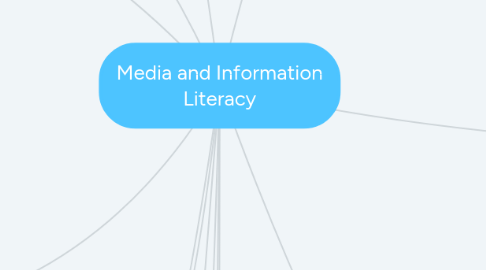
1. books
2. Media business expand and distribute their content to the world
3. Local Landscpae
3.1. The current media landscape in the Philippines is still predominantly Manila centric.
4. motion picture
5. Framing and listening
5.1. Radio and evoking imagination
5.1.1. Brodcast
5.1.2. Immediate source of music and news
6. Brief History of media
6.1. Pre-industrial age
6.1.1. cave paintings
6.1.2. clay tablets
6.1.3. dibao
6.1.4. codex
6.1.5. papyrus
6.1.6. acta diuma
6.2. Industrial age
6.2.1. printing press
6.2.2. newspaper
6.2.3. typewriter
6.2.4. telegraph
6.3. Electronic age
6.3.1. TV
6.3.2. transistor radio
6.3.3. computers
6.3.4. LCD PROJECTORS
6.4. Digital age
6.4.1. blogs
6.4.2. videos/youtube
6.4.2.1. web browsers
6.4.3. search engines
6.4.4. smart phones
7. Brief history of Philippine media
7.1. The Print industry and Filipino freedom
7.1.1. Magazine
7.2. The European Film Import
7.2.1. Spanish soldier named Carlo Naquera the "Cinematographe".
7.2.2. A brief documentary.
7.3. Pre-colonial traces
7.3.1. Discovery of ancient alphabet called "alibata" or"baybayin".
7.4. The Broadcast Industry
7.4.1. Telegraph and telephone system
7.4.2. Radio and television
7.5. Local Online Media
7.5.1. World of Internet
7.5.2. Philippines was named as "social media capital of the world" in year 2011
8. The state of media today
8.1. Glocalization
9. LESSON 2:Media then and now
10. LESSON 3:Understanding media
10.1. Framing and reading
10.1.1. Newspaper and Journalism
10.1.1.1. News
10.1.1.2. broadsheets
10.1.2. Books, comics, magazines and publishing Industry
10.1.2.1. printed book
10.1.2.2. Stories
10.1.2.3. Language
10.1.3. Photography and timeless image concepts
10.1.3.1. Camera
10.1.3.2. Digital Computer
10.1.3.3. lightning and focus
11. kinds of media
11.1. mass communication
11.2. mobile technology
11.3. Traditional Media
11.3.1. written or print
11.3.2. New Media
11.4. digital media
11.5. Social Media
11.5.1. twitter
11.5.2. facebook
11.5.3. instagram
11.6. Mobile communication Technology
11.6.1. Phone
11.6.2. Tablet
11.7. Related and Emerging technologies
11.7.1. siri
11.7.2. google glass
11.7.3. amazon alexa
12. The time where we learned the existence of language system.
13. LESSON 1:What is Media?
13.1. communication process
13.1.1. The steps we take in order to achieve a successful communication.
13.1.2. Starts from the sender to send the Message to be delivered using Channels and the Receiver. (SMCR Model)
13.2. information industry
13.2.1. Creative industry
13.2.1.1. film
13.2.1.2. broadcast
13.2.1.3. publishing
13.2.2. Companies and telecommunication providers
13.2.2.1. Provides internet
13.2.3. Media channels
13.2.3.1. mobile phones
13.2.3.2. tablets
13.3. culture of entertainment
13.3.1. "The sum of those characteristics that identify and differentiate human societies"
13.3.1.1. language
13.3.1.2. history
13.3.1.3. traditions
